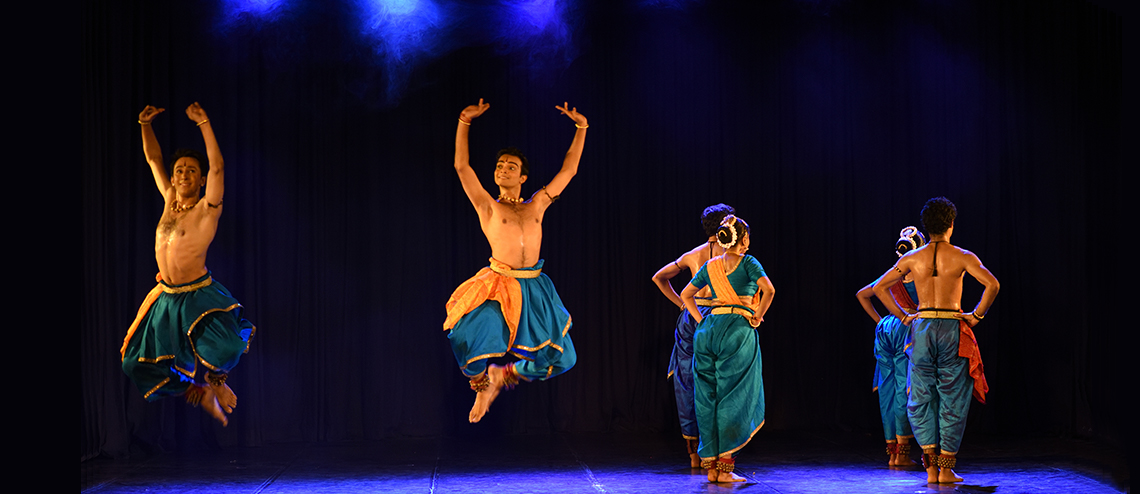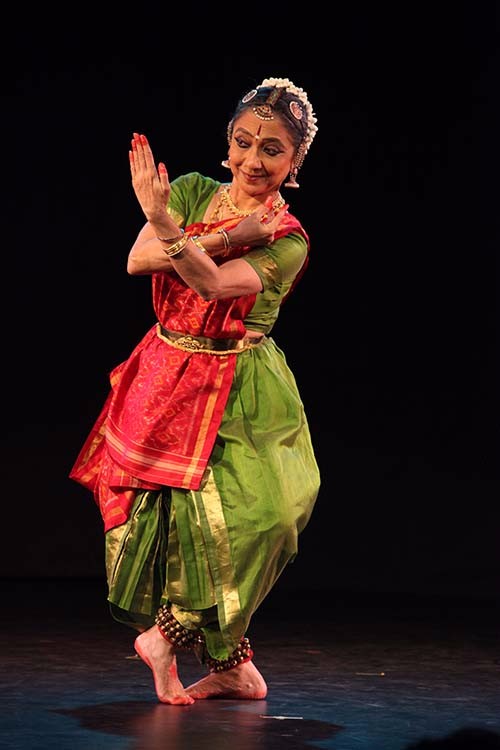Lovers of the classical Indian dance form of Bharatanatyam will enjoy its magnificence during Kalaa Utsavam 2018, performed by none other than one of its leading exponent, Leela Samson, and her troupe. Their show called Nadi (River) on November 24 explores the love and longing, the physical changes and the deep philosophy that rivers have inspired through centuries, through the voices of Indian poets.
Leela Samson is known for her technical virtuosity and many leading dancers have blossomed under her tutelage, including Joyce Paul Poursabahian, Justin McCarthy, late Kamaljit Bhasin Maalik (Meeto), Jin Shan Shan (Eesha), Navtej Singh Johar and Anusha Subramanyam.
Starting her career as a Bharatanatyam soloist, Samson taught at the Shriram Bhartiya Kala Kendra and Gandharva Mahavidyalaya at Delhi. She enjoys the reputation of being a dancer who has excellent form in nritta and sensitive abhinaya. Leela has travelled extensively and performed at leading festivals of dance in India and abroad.
In 1995, Samson formed Spanda, a dance group to review the traditional vocabulary of Bharatanatyam. She has taught Bharatanatyam across the world, including at the Royal Opera House, Convent Garden, London and the annual Milapfest at Manchester.
Besides being an acclaimed dancer, Leela has also written a few books – ‘Rhythm in Joy’ for Lustre Press in 1987, on the classical dance forms of India, ‘Rukmini Devi – a life’ published by Penguin Viking in 2010, on the life of the legendary founder of Kalakshetra.
Leela Samson has headed many reputed institutions being the director of Kalakshetra, chairperson of Sangeet Natak Academy and also the chairperson of Central Board of Film Certification.
Nadi is a selection of poems written in six Indian languages: Tamil, Sanskrit, Kannada, Urdu, Hindi and Bengali. The musical expressions are varied. The production features a traditional thumri (classical Hindustani song) from the city of Varanasi; Rabindranath Tagore’s (1861–1941) poetic and musical expression that reflects the soulful music of the wandering Bauls of Bengal; a 200 to 300-year-old bandish (a fixed, melodic composition in Hindustani music) said to be written by Ustad Taanras Khan as a duaiyan nazm (Urdu poem) on Hazrat Khizar, an Islamic fakir; the chaste classical expressions of the composer Dikshitar (1775–1835); Sangam poetry (a collection of poems composed by 473 poets, written between 400 BCE and 300 CE) of the Tamil country; a modern-day Girish Karnad piece written in Kannada; and a Rajkumar Bharathi piece written in Tamil on the pitiful condition of the river today.
Leela Samson narrates about her tryst with Bharatnatyam and her philosophy of life that it must be continually navigated in her exclusive chat with Connected to India.
CtoI: Your dancing prowess and technical virtuosity in choreography is well known. What attracted you towards dance and making it as a career of your life?
Leela Samson: I started when I was little – so I did not really choose the form. Perhaps it chose me! But once I finished my dance course and school exams then I knew it was what I would do.
CtoI: River is the very source of life and connects us to varied philosophies, culture and languages which is effectively portrayed through Nadi (River). Why have you chosen the topic and what message do you want to convey through this dance performance?
Leela Samson: It is precisely because the river is the source of life and philosophies that I am drawn to the concept. I would like to convey the philosophy that life must be navigated and the goal is to cross the river to new shores. We must do it with a love for life and people.
CtoI: Nadi also encapsulates poems in six languages including Tamil, Sanskrit, Kannada, Urdu, Hindi and Bengali. How has the experience of uniting all the languages through the dance and showing to the people been?
Leela Samson: It is wonderful working with so many beautiful languages. What sheer beauty of expression and language! We are missing a lot by not learning more languages in a country like ours that can boast of so many.
CtoI: What is the relevance of Esplanade’s Kalaa Utsavam – Indian Festival of Arts for you?
Leela Samson: The festival allows for new expressions and brings India and Singapore closer. The roots of these arts are in the Indian subcontinent and it is our delight to share these with people everywhere.
CtoI: How do you think Kalaa Utsavam plays an important role in bringing people closer to Indian music and culture?
Leela Samson: The influence of the arts in our lives cannot be underestimated. We have to make a huge effort in our very hasty lives to reflect, to silence ourselves, to be creative, to work with our hands and hearts, to be contemplative.





